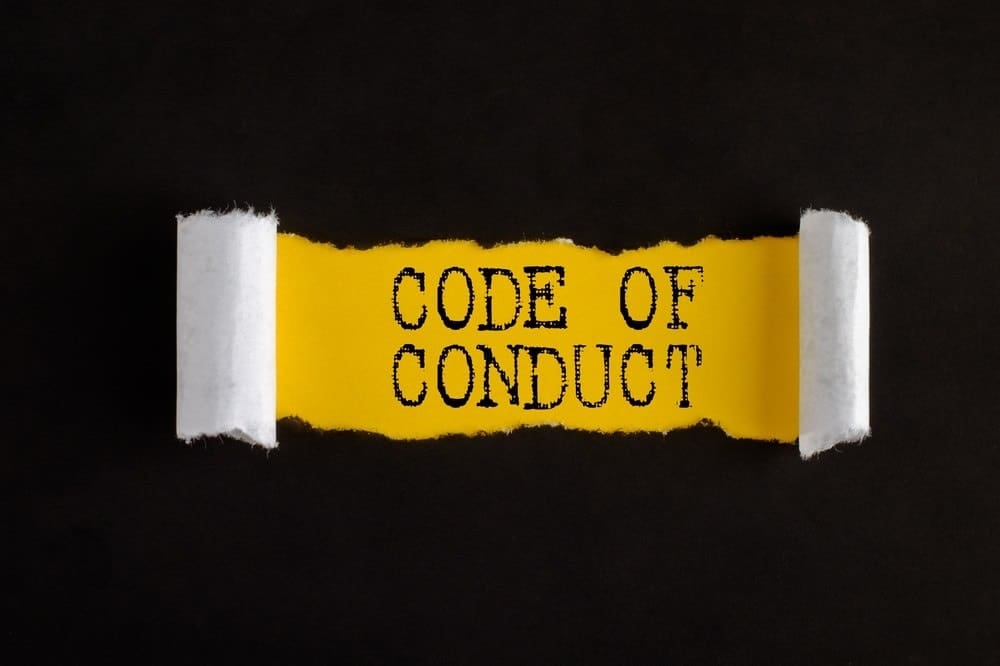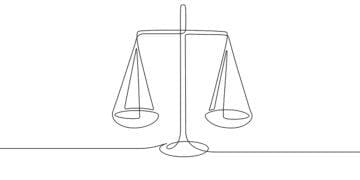A code of conduct tells a story about the company’s level of commitment to ethical business practices and ability and willingness to be held accountable. What does your conduct of conduct say?
Like it or not, your company’s code of conduct ‘talks’ about your company — it tells a story about what the company believes it and cares about, what it is truly committed to and the way it can be expected to act. For this reason, a company should pay close attention to the story it is telling through its code. The best of codes serves as strategic communication that effectively conveys a company’s commitment to act responsibly and accept accountability for doing so.
For years, companies have been using public relations and other marketing communications to put a good face on how others view them. With the advent of the Internet, now all sorts of communications are publicly and readily available – not only shareholder reports and regulatory filings but also committee charters, company policies, certain audit reports, product marketing materials and many other corporate documents.
Publications not developed for an external audience are finding their way onto a company’s website and to other places, and they are telling their readers a story about the company – including its leadership’s beliefs, priorities and actions.
Today, most corporate codes of conduct are posted online; people know it, and so they specifically look for these publications. Typically, a code of conduct is the most visible part of an organization’s ethics and compliance program. It often summarizes many features of this program. It also conveys a sense of what is important to that company’s leadership.
Now, a company’s stakeholders are turning to the company’s code of conduct to learn about leadership’s attitude about ethics and compliance. How does leadership view ethics and compliance? Are the leaders committed to responsible business practices? In what ways do they support this commitment? These questions – and more – might be understood through a code of conduct – in what it ‘says’ through what it does and does not address and the way it addresses its content.
What stories are these codes telling? Lackluster codes speak volumes — largely about what the company appears to not care about. Such codes communicate the bare minimum about ethics and compliance responsibilities – and their readers are right to expect as much from the company.
Conversely, great codes tell a story about a company strongly committed to responsible conduct, its leadership’s reinforcement of key messages, the relation of ethics and compliance to the company’s culture and success, the systems it maintains to help ensure ethical conduct and the steps it plans to take to demonstrate accountability for its actions.
Differences between Lackluster and Strong Codes of Conduct
| Lackluster Code | Strong Code | |
| Leadership tone | No real leadership attention to or real conviction for ethics and compliance. | Strong leadership belief in the importance of ethical conduct and commitment to ensuring it is sustained. |
| Culture | No connection between ethics and compliance and the organization’s broader mission, values other aspects of its culture. | Strong interconnection between ethics and compliance and various aspects of corporate culture, along with the way ethics and compliance supports a strong culture. |
| Operations | No clear connection between a code’s topics and the company’s activities. | The code’s topics address common company activities and how standards help guide employee conduct related to them. |
| Code’s Topics | Limited scope of issues that the code covers because of insufficient understanding of how ethics impacts operations. | Topic listing displays an awareness of ethics in all aspects of an organization’s activities. |
| Compliance systems | Non-existence of systems. | Existence of systems that support responsible conduct. |
| Accountability | No real thought regarding the way the organization will hold itself and its employees accountable. | Discussion of leadership’s responsibility and systems designed to ensure it and steps leadership takes to demonstrate it. |
| Writing | Often written in a difficult-to-parse style with legalistic jargon. | Easy to read, understand and apply. |
| Visual design | An uninteresting, generic-looking document. | Attractive, easy to navigate, visually connects with corporate branding and culture. |
| Accessibility | Not so easy to find, access, sometimes read, or download for future needs. | Easily located, opened, read and saved for offline use. |
Who’s Reading Codes of Conduct?
There is a good chance that just about everyone is reading your company’s code. Now that most companies’ codes of conduct are posted on their websites, anyone can quickly learn about the way a company communicates about its approach to responsible business conduct.
- Prospective employees – They want to learn about the company, its culture, its business practices and what would be expected of them if they join the company. Prospective employees probably will overlook a poor code and are likely to be inspired by a great code.
- Current employees – Employees want to know what leadership says about its commitment responsible conduct and to support employees in making responsible decisions and supporting their own decision-making efforts.
- Regulators – The government seeks to understand how seriousness the company is about ethical business conduct and what it is doing to support its commitments.
- Shareholders – Investors look to discover whether a company has in place a strong risk management program that will help to avoid or responsibly handle problems.
- Customers – Customers want to learn about whether they can expect a company’s employees to interact with them responsibly and meet the company’s commitments to customers.
- Suppliers – These business providers that want to know what a company expects of them and what sort of business partner they can expect the company to be.
- Communities – Local communities look for whether a code addresses issues of concern to them, such as a commitment to environmental protection, human rights, relations with government and political officials, community volunteerism or other matters important to a company’s communities tells them about that company’s interests
- Industry watchers – Non-governmental organizations (NGOs), labor unions, activist groups and other organizations that are keenly interested in a company’s business practices want to know about a company’s level of commitment regarding certain issues and the steps it is taking to meet and sustain that commitment.
Key elements of a code of conduct that “talk” to readers include the following:
- Accessibility
- Contents
- Style
The Code’s ‘Accessibility’
The way that a company makes its code accessible says lots about leadership’s interest in others reading it.
Web Presence
The availability of a company’s code of conduct can say a lot. U.S. public companies are all but required under the U.S. Sarbanes-Oxley Act and stock exchange listing requirements to post their codes on the web. Still, some companies stick to the letter of the rule and only make the code available in a regulatory filing or only upon specific request. When the vast majority of public companies post their codes online, one company’s omission is all too obvious. Even some non-public companies are putting their codes on the web even though not required to because they recognize the value that these codes provide.
Web Location
Where a company posts its code also sends a message. Most companies post their codes under their web site’s “Investor Relations” section, as if the document was exclusively intended for regulators and shareholders when, in fact, it chief purpose is to notify employees of the company’s expectations. Often, the code is found under the “Corporate Governance” web site. When this site is listed under “About Us” rather than “Investor Relations”, it can indicate that the company sees the code as not simply a regulatory filing but rather a more strategic document that helps indicate the company’s identity. Even within this web page, some codes come under an “Ethics and Compliance” sub-page, or something similar.
File Format and Translations
A code’s accessibility also includes how well readers can use the code. For example, one very large company’s code is posted on its website using technology that does not allow it to be easily viewed in its entirety or printed. This approach all but requires an employee to have Internet access and navigate the code page by page to consult these standards. Better codes are made available in a downloadable format, such as with Adobe Acrobat, so that readers can place the code on their own computer for offline access. These codes also are formatted for printing should someone need access to it when not at a computer. Further, companies with a global workforce but that do not provide translated versions can ‘tell’ non-U.S. employees with only nascent English reading levels that the company is not committed to their reading and understanding the code.
The Code’s Contents
A code’s contents reflect how well leadership perceives a connection between a company’s culture and operations and ethics and compliance.
What Leadership Says (or Does not Say)
Even today, some codes still lack a message from the organization’s leader. Compared with better codes of conduct, this omission is glaring — as if the CEO does not care enough about ethics and compliance to introduce the code. Others may include a CEO message, but it is wordy, unimaginative and reads like public relations spin. The best codes are introduced by the CEO or Board chairperson. The message is appropriately brief, has an authentic voice and relates the importance of ethics and compliance to the business’s mission and success, among other attributes.
What Topics the Code Covers
If you want a quick ‘tell’ as to a company’s attitude toward ethics and compliance, review the code’s table of contents. A contents page serves as a quick ‘giveaway’ to a company’s commitment to ethics and compliance. (If the code does not have a contents page, that may say something else — such as that it is not terribly interested in helping employees locate needed information). A contents page that displays a very limited number of topics suggest that the company’s leadership believes that only a limited set of business activities have ethics implications. Better codes’ content pages tend to list a broad array of business activities, reflecting leadership’s understanding that ethics figures into all of them.
Other content that the code may or may not contain can shed further light on the company’s commitment. Many codes still stop at the basic U.S. Sarbanes-Oxley or stock exchange content requirements. The best codes go much further. They provide information about the company’s ethics and compliance systems that support preventing, detecting, mitigating and correcting problems. Content may include the ethics and compliance program structure, overall responsibilities for employees, managers and even executives, investigative and disciplinary procedures, and even approaches the company uses to correct problems and make restitution for improper conduct. This information is important because it underscores the company’s commitment to promote responsible conduct and address misconduct, and it lets employees know that the company will support their own efforts to seek advice or report suspected misconduct.
A Code’s Style
The way a code is written and designed reflects the seriousness that leadership views the code as an important communication tool for its ethics and compliance efforts.
Writing style
A code that is written in a dry and legalistic style suggests that the code was authored most likely by contract attorneys seeking to protect the corporate entity, not to effectively inform employees and others of the company’s commitment to ethical conduct and its standards. This approach is very much like a web site’s “Terms of Use” conditions that users are expected to agree to before accessing a website. But very few people actually take the time to read or truly understand these terms.
A code that is easy to read and understand tells readers that the company is attempting to help employees and others really understand and appreciate the organization’s standards and its efforts to support their use of these standards. A code written in a way that reflects the organization’s overall style better connects with employees and provides others with a sense of the organization’s culture.
Visual Design
A code that looks like a legal document, with awkward formatting, indentations, outlining and other structure may get employees’ attention (especially if they have to acknowledge it in writing), but it will not garner their interest, appreciation and regular use. With all the corporate communications demanding employees’ attention, it is vitally important that a company get employees to spend time with the code since it covers such an important part of the business – the way it is conducted.
A code that looks inviting and reflects the organization’s culture, branding and style indicates the company’s interest in people reviewing it. It shows the company has taken the time and effort to present a compelling face to employees and the public. More so, it evidences the company’s efforts to provide employees with a communication that reflects its important role. Well designed codes not only are attractive, they are easier to navigate and appreciate, and they can help instill a sense of organizational pride – pride that an employee’s company is intensely committed to responsible conduct and to meeting its many commitments to its important stakeholders.
But Didn’t Enron Have a Code?
Yes it did. In fact, Enron’s code also included a letter from the CEO, and it addressed responsibility for employees to report misconduct and information on administration of the compliance program. Enron even required employees to acknowledge in writing their understanding of and responsibility for the code. It included many elements that would suggest a company and leadership reasonably committed to responsible conduct. That’s right – a code does not tell the whole story. Smart employees and other inquisitive people will probe more deeply to truly understand an organization. Just as a good corporate recruiter does not rely solely on an applicant’s resume to understand him or her, one cannot expect a code to fully explain a company’s commitment to business practices. Still, a great code of conduct can offer a likely perspective of a company’s seriousness in managing ethics and compliance issues.
Conclusion
Typically, a company’s code development or revision effort serves as a good impetus to review the program’s overall message. Such an effort likely will raise questions about leadership’s perspective of the program, its audience, the way it is positioned, its components and other critical aspects that not only impact its success but also others’ appreciation of it. As a program’s chief communication, a code plays a critical role in shaping others’ perspectives of the company’s commitment to ethics and compliance and, in turn, its overall reputation as a responsible employer, customer, supplier, partner and corporate neighbor.

















